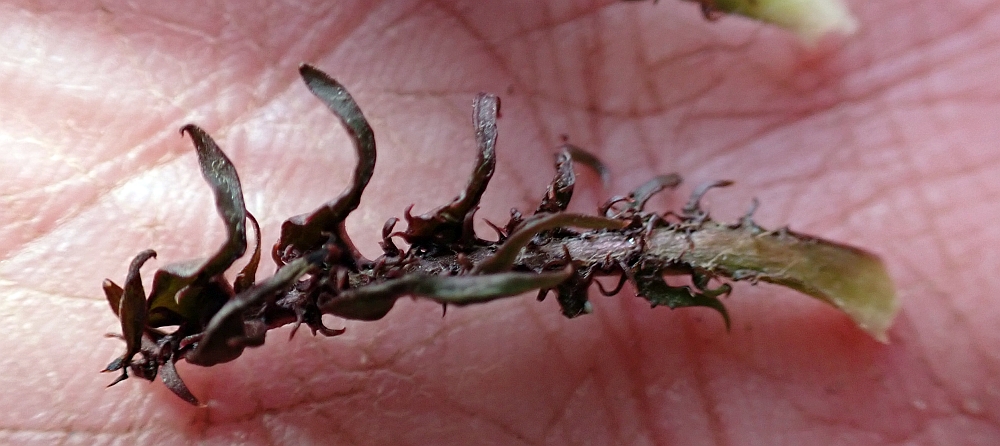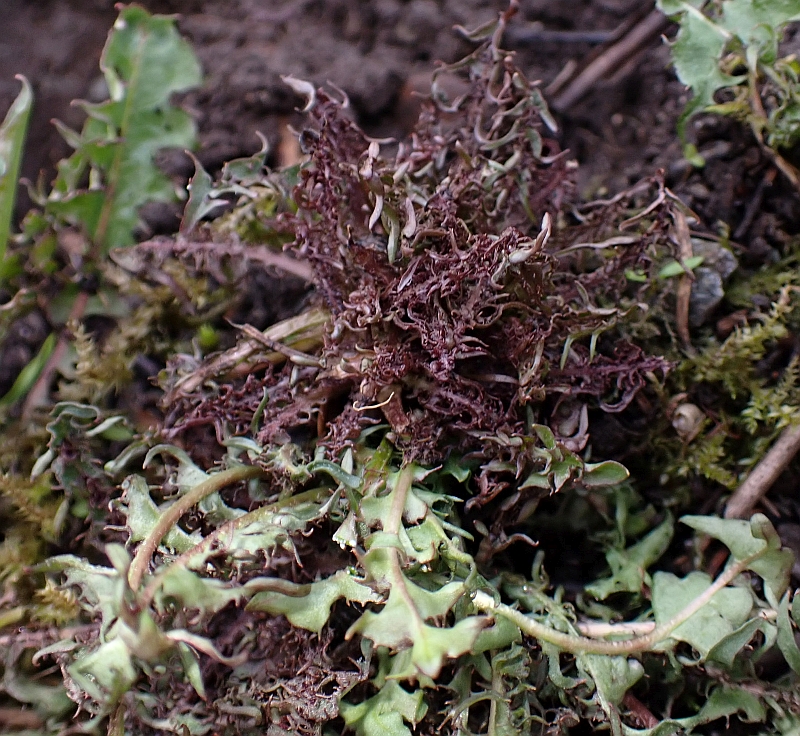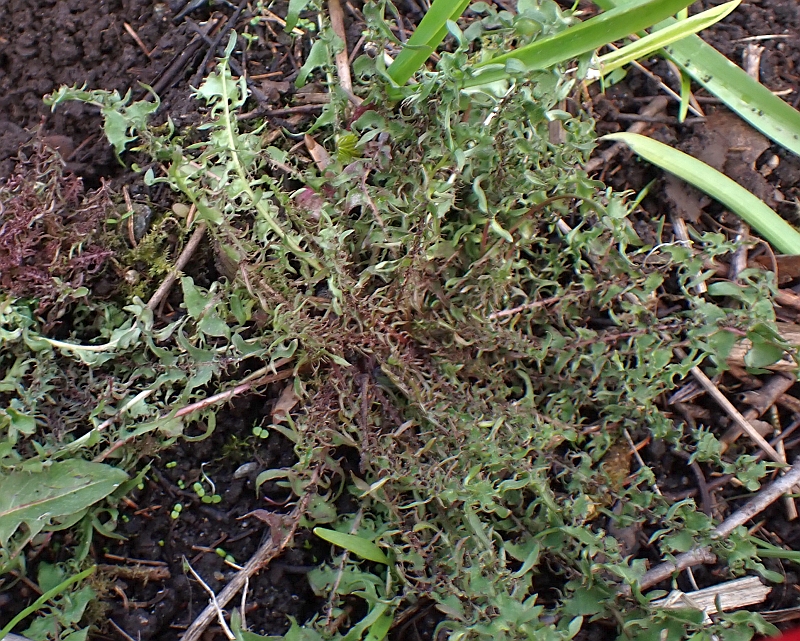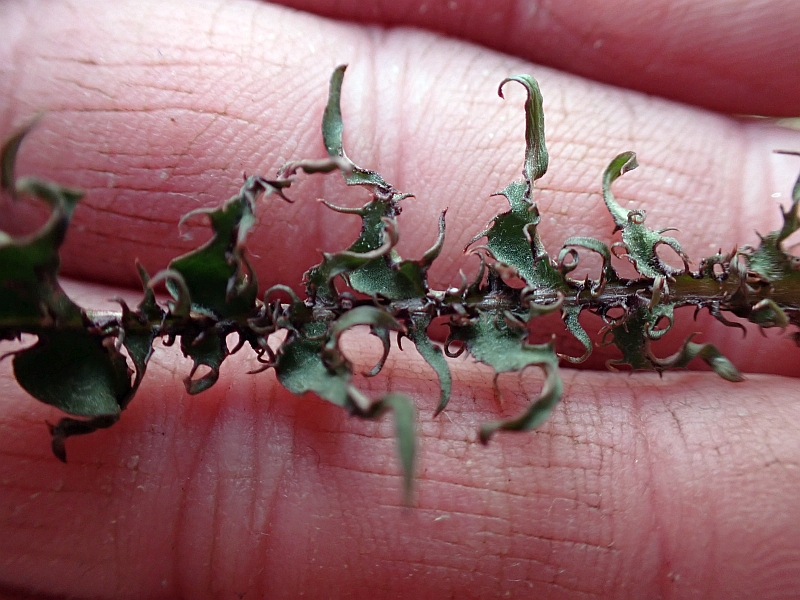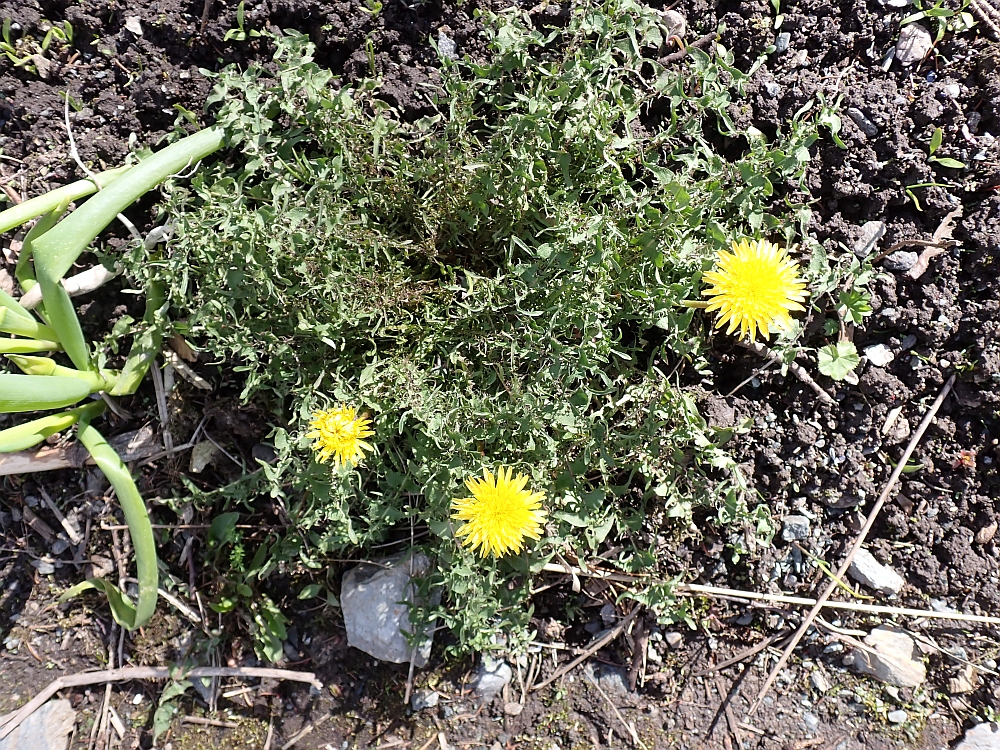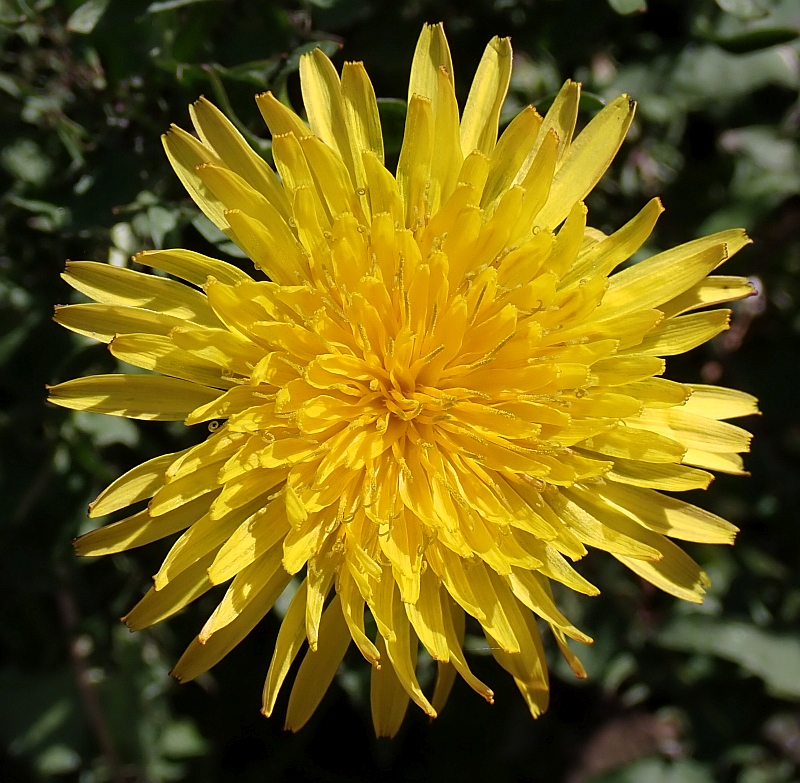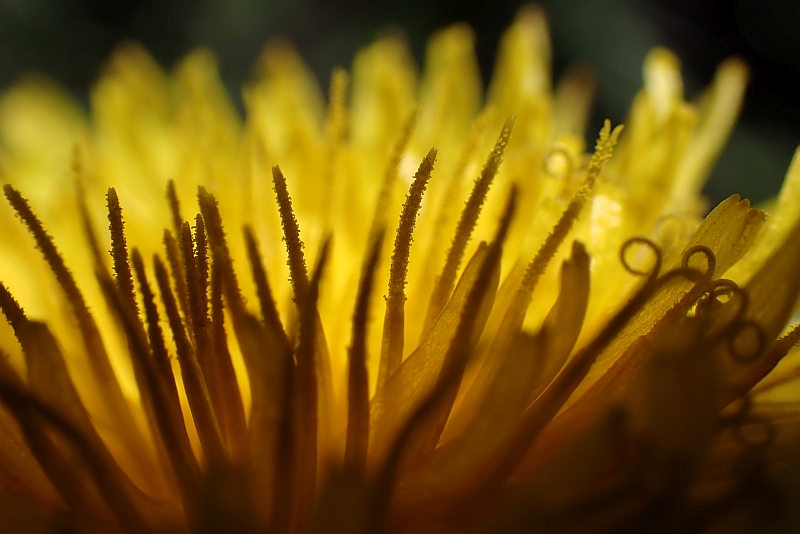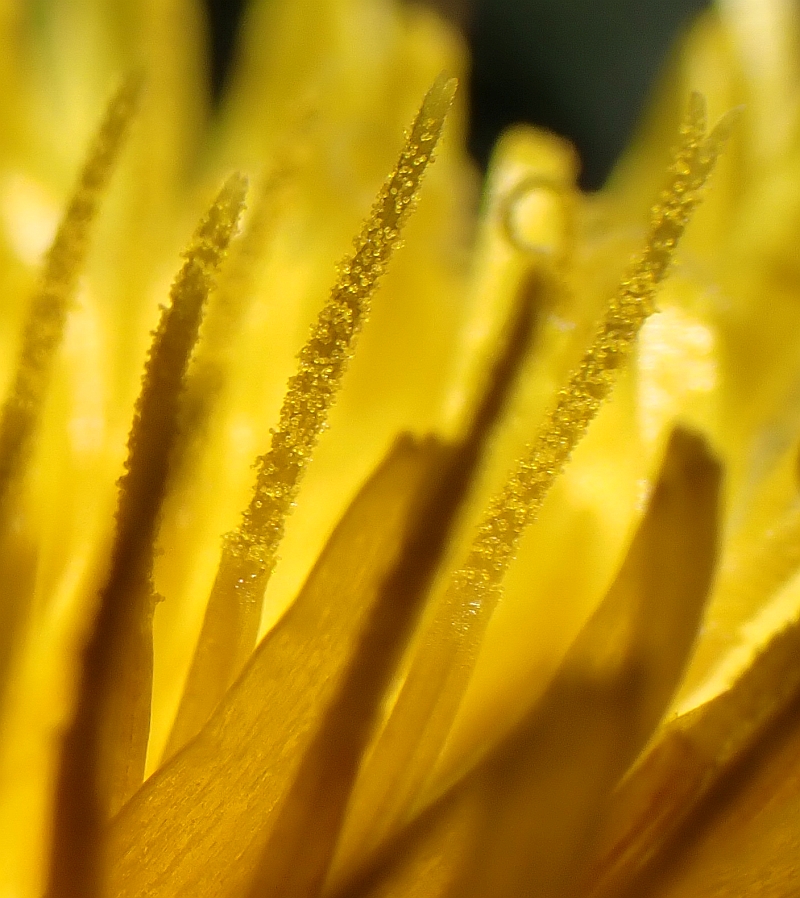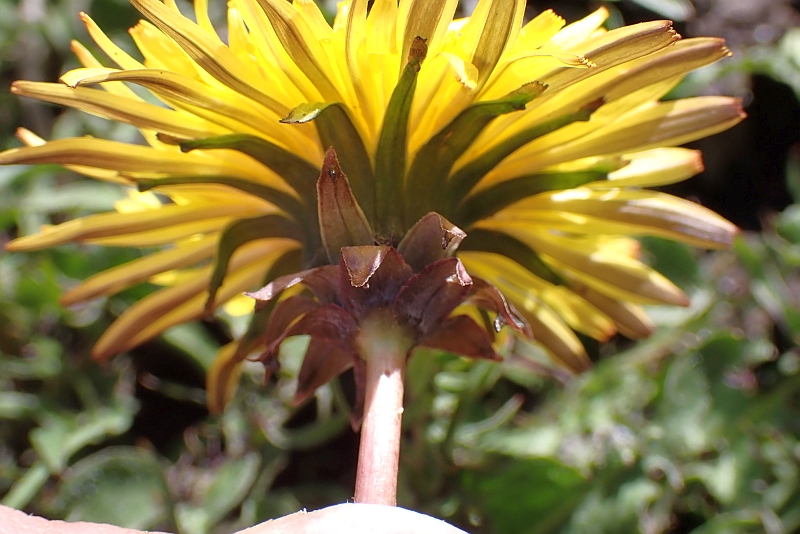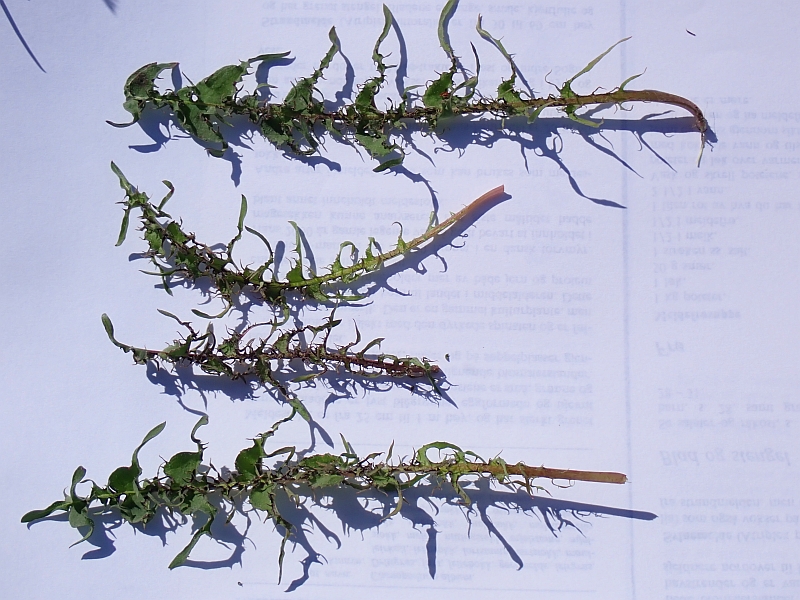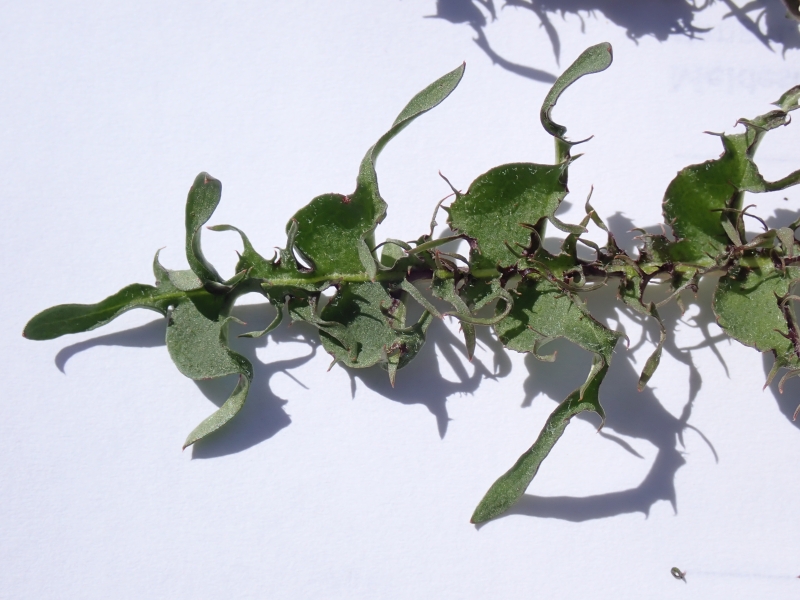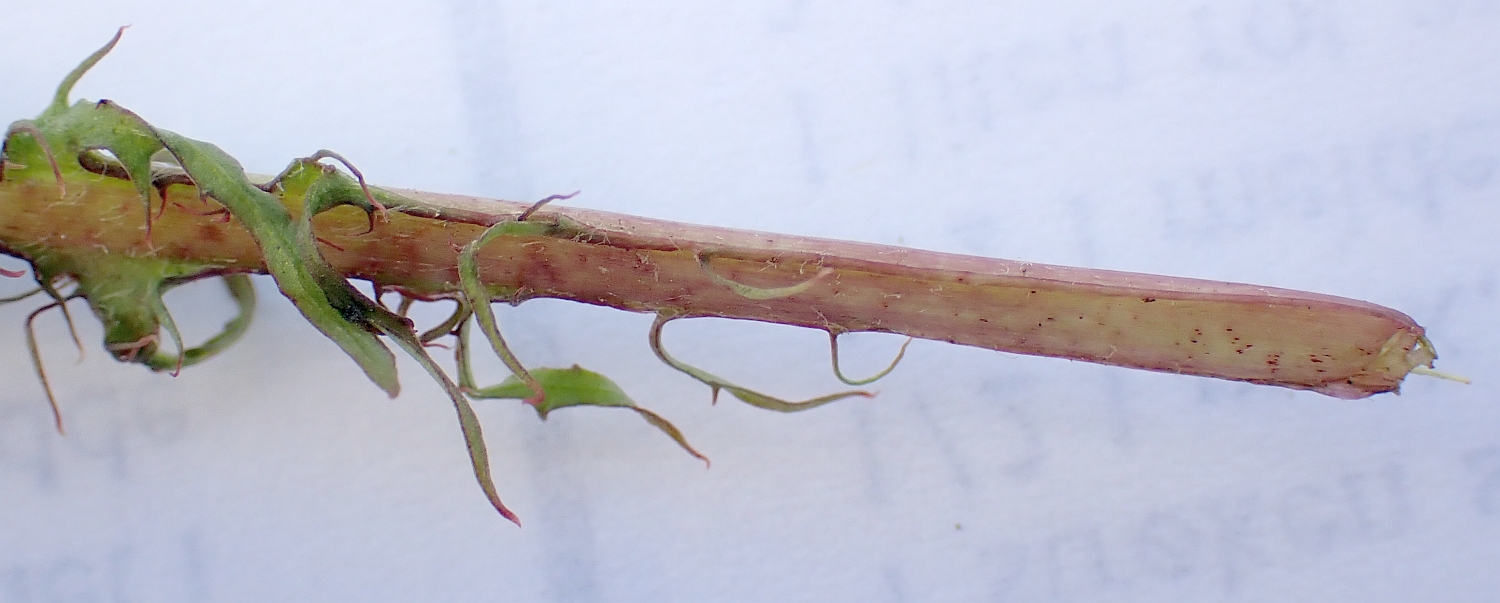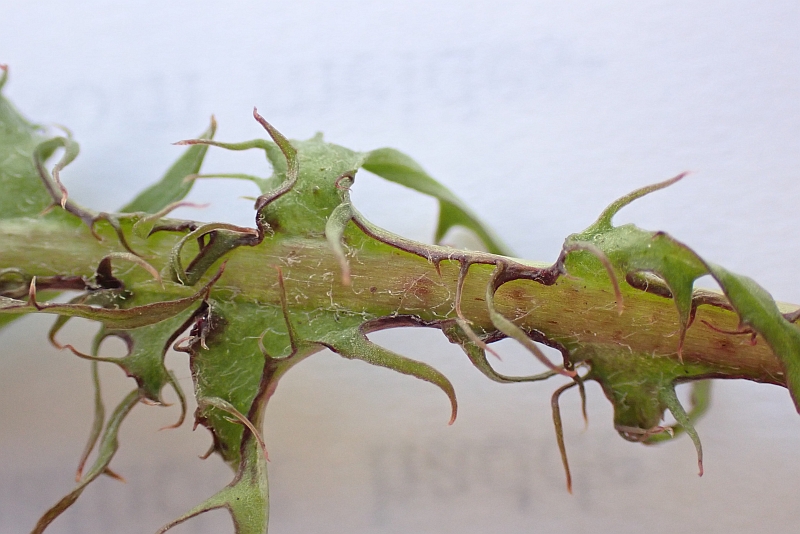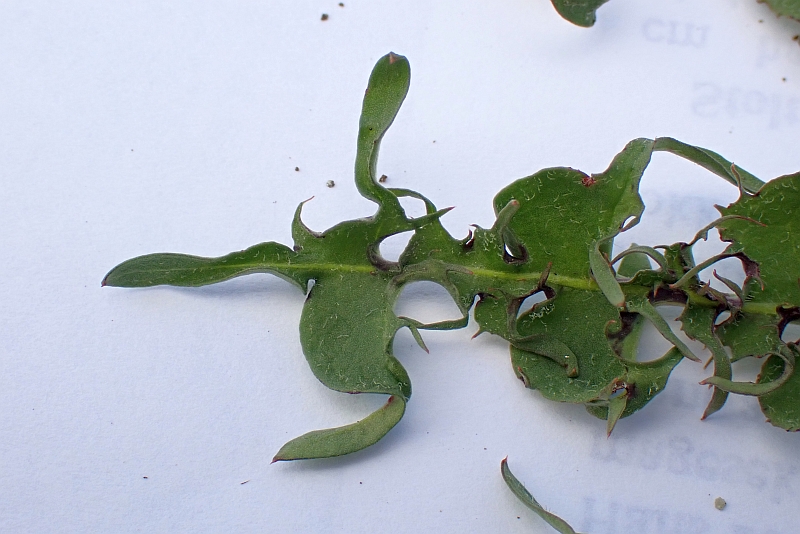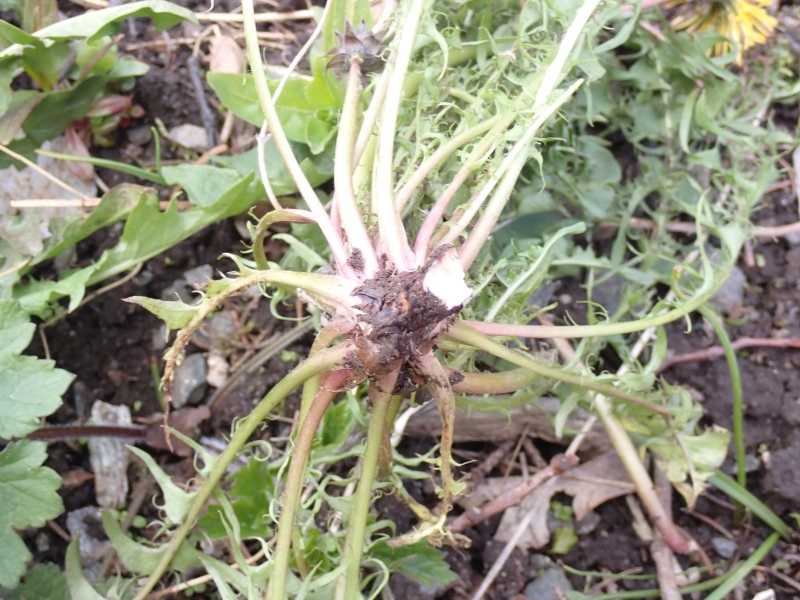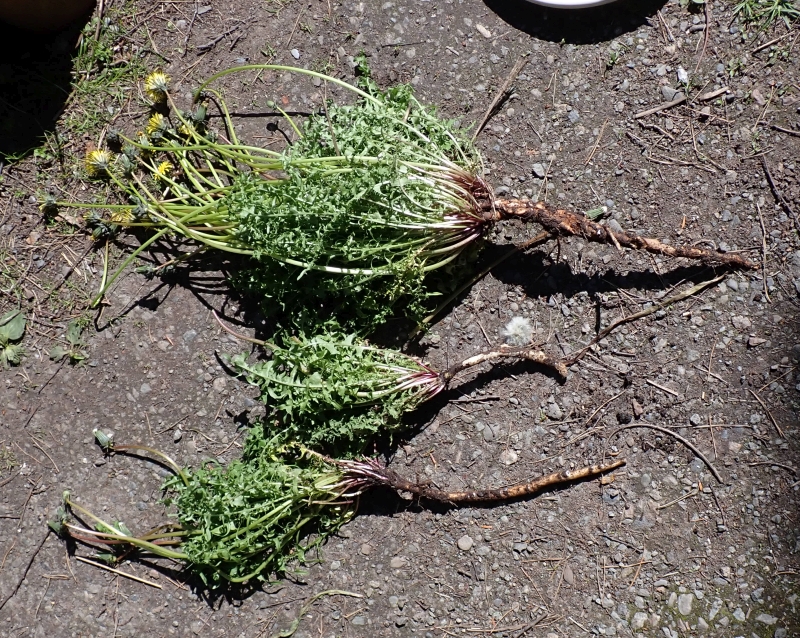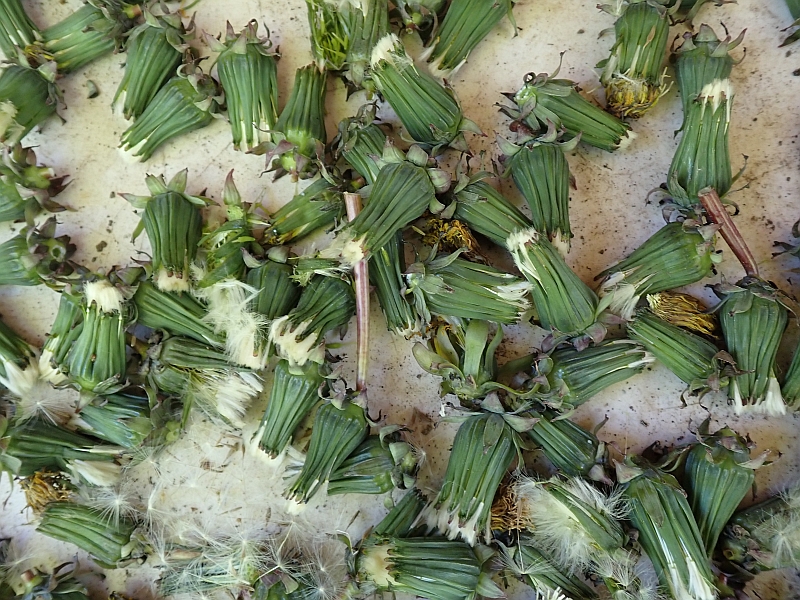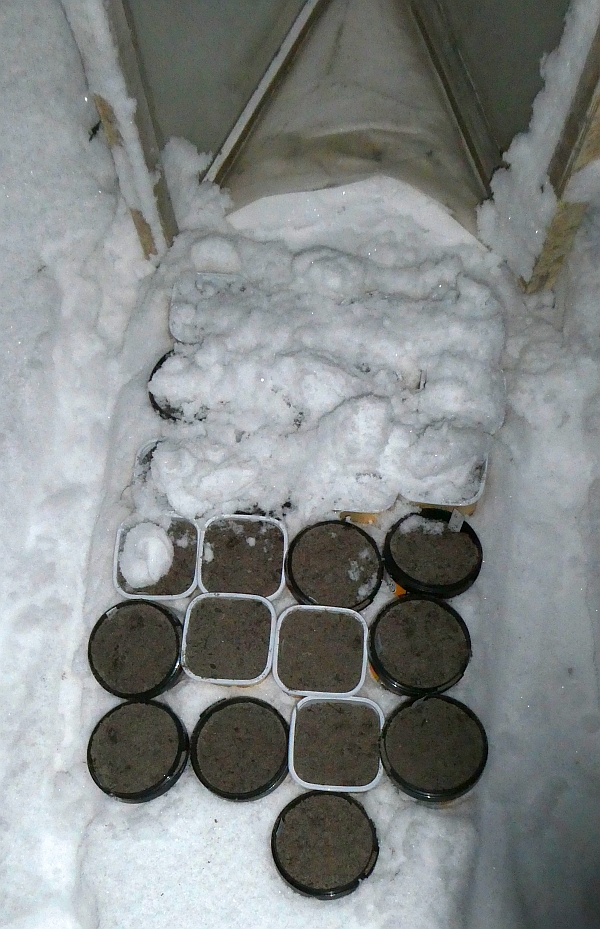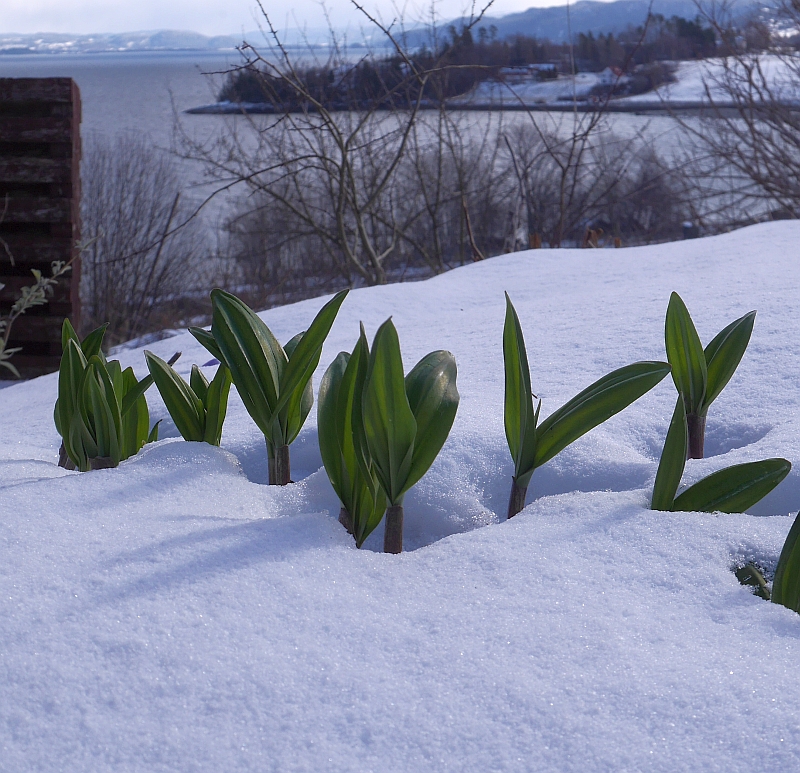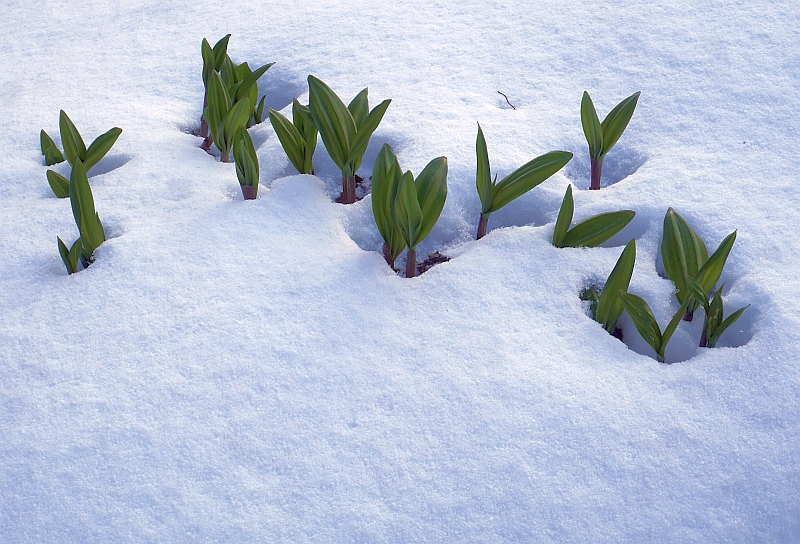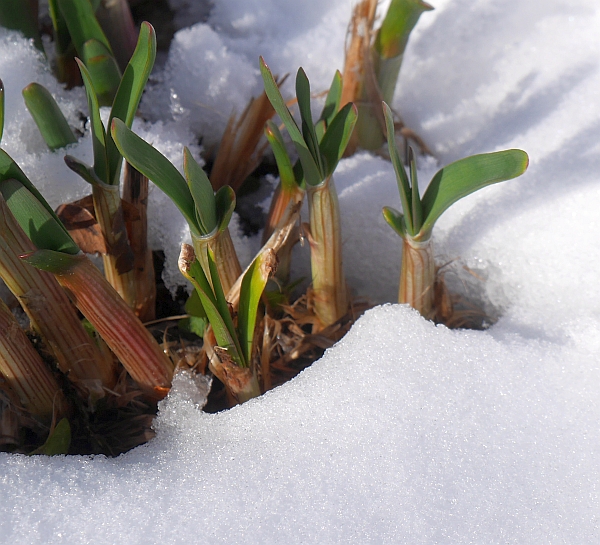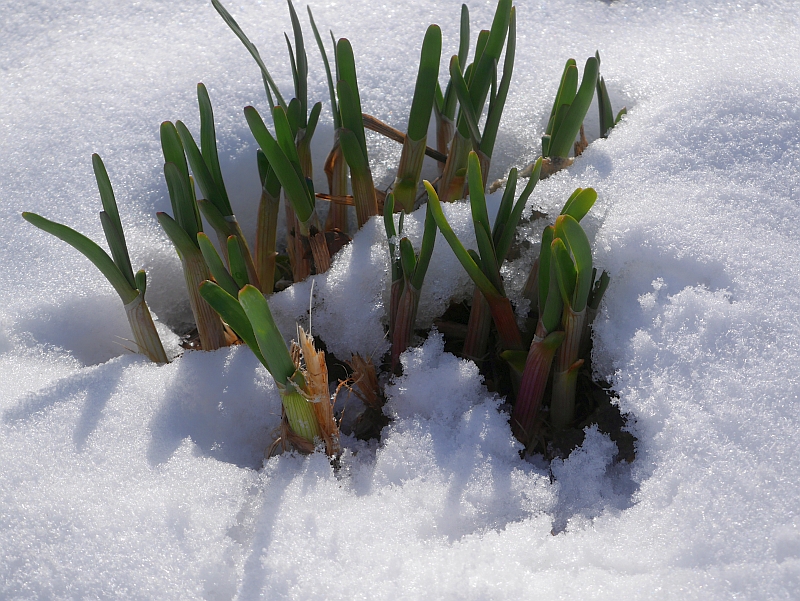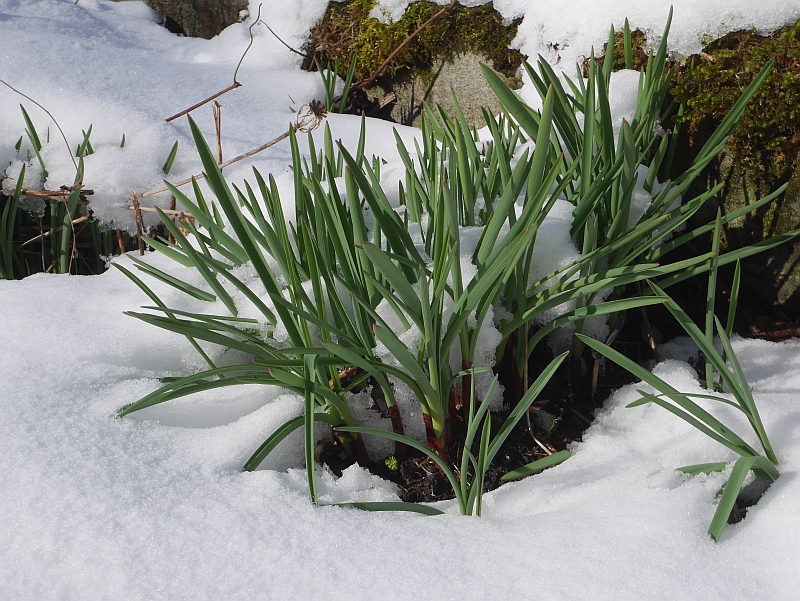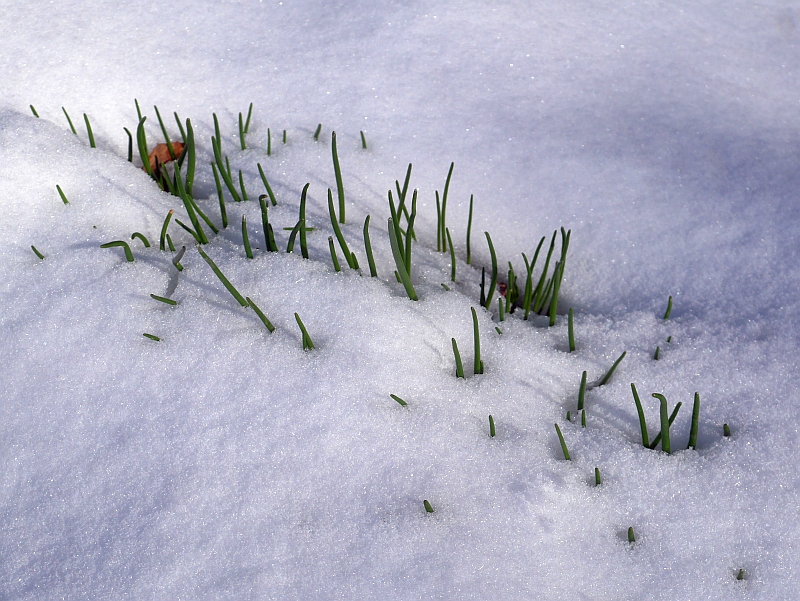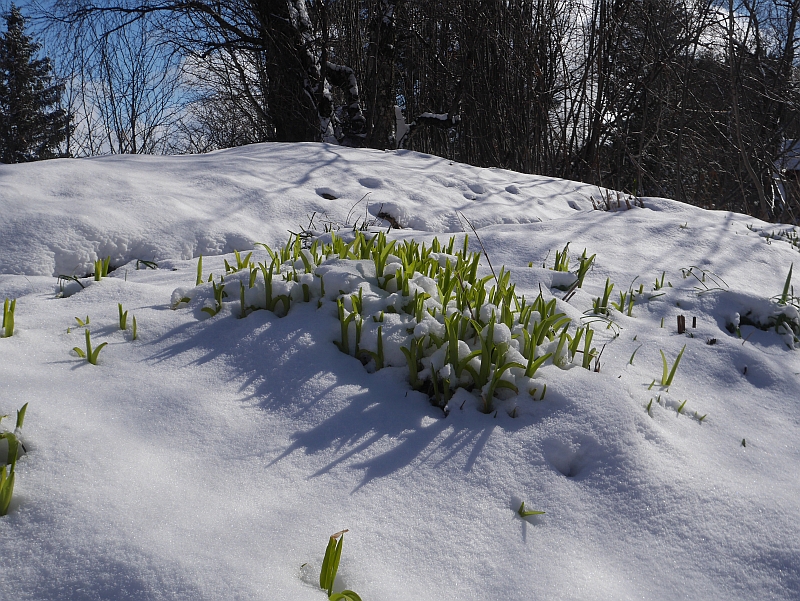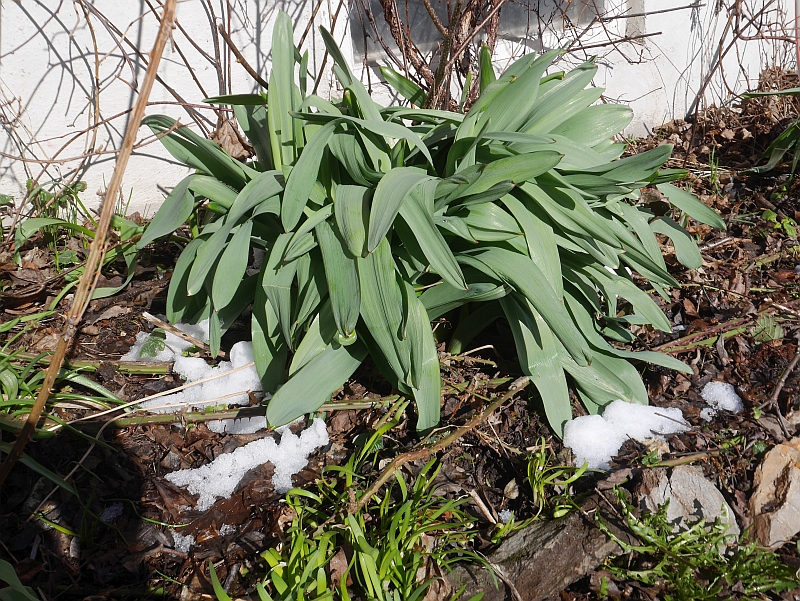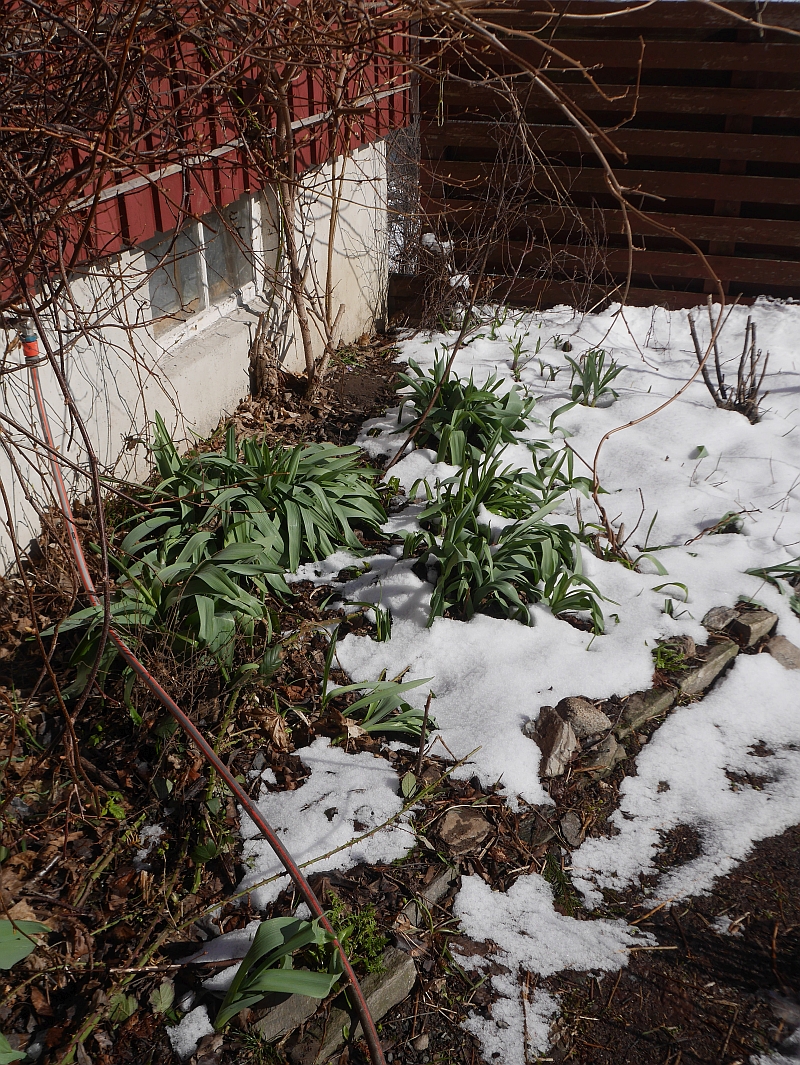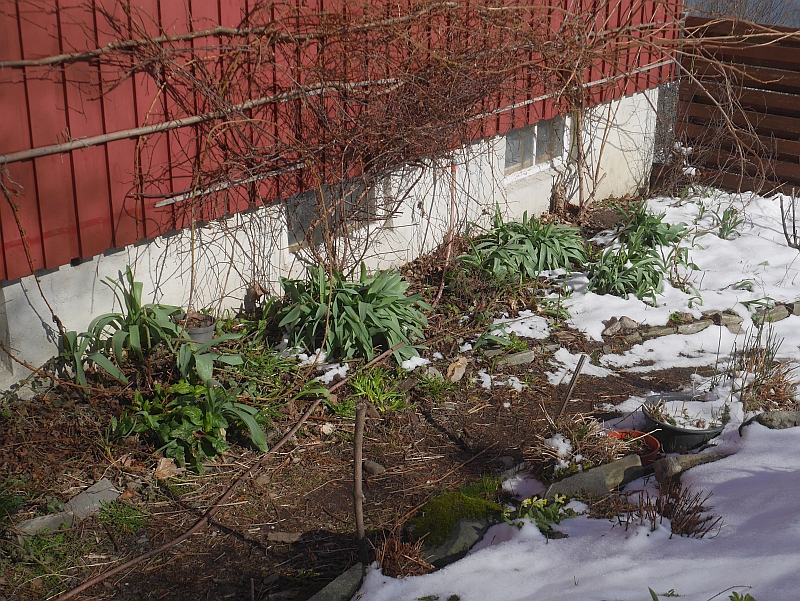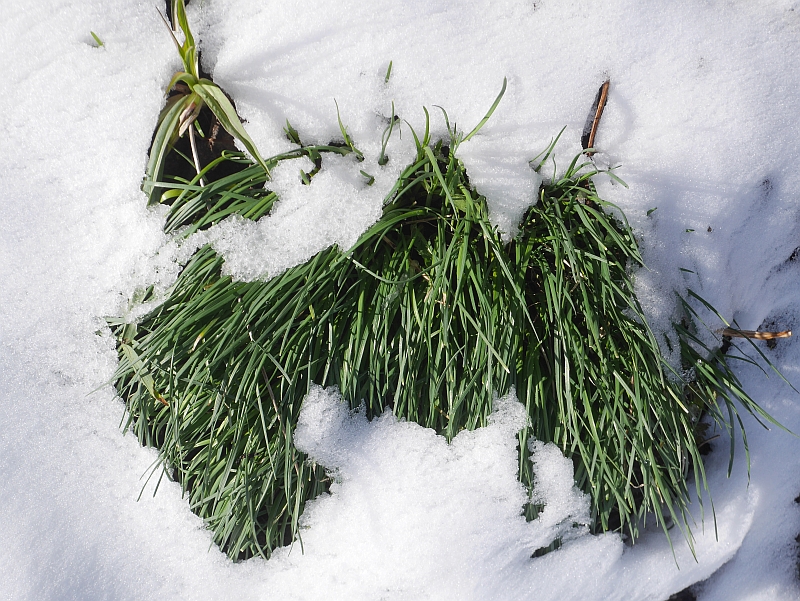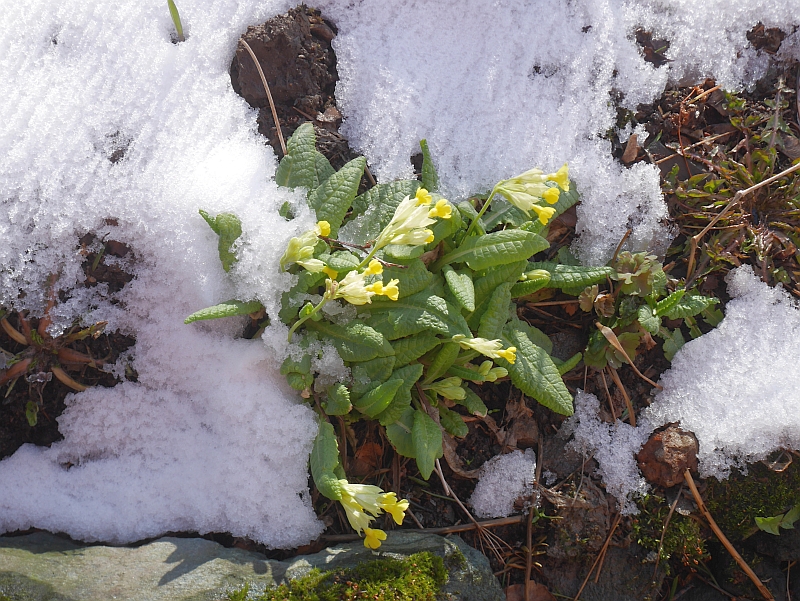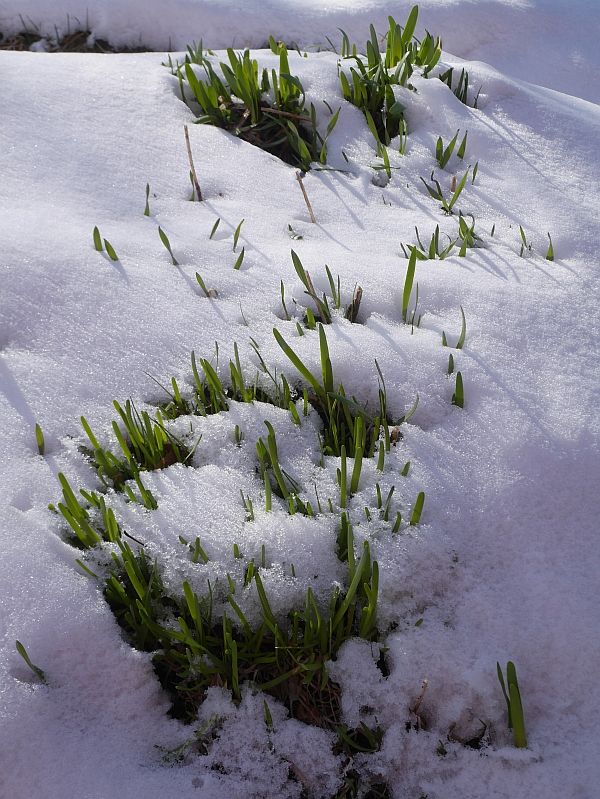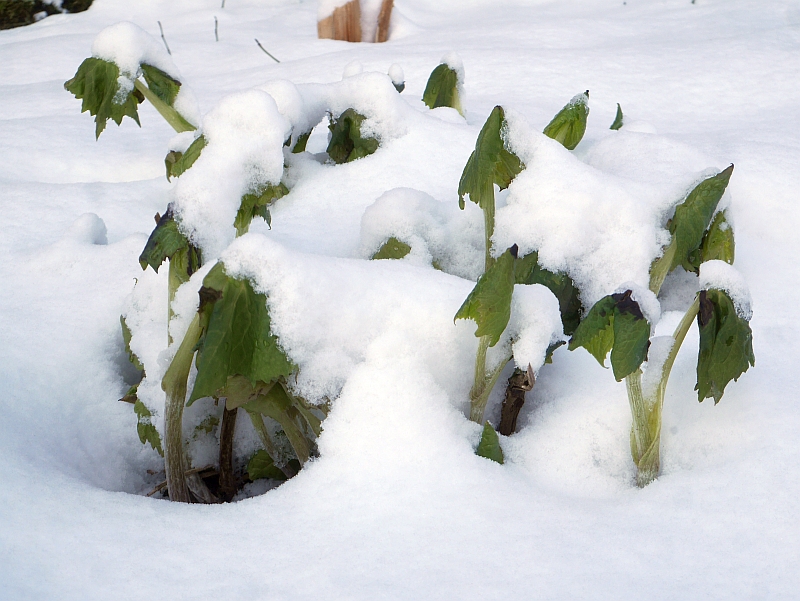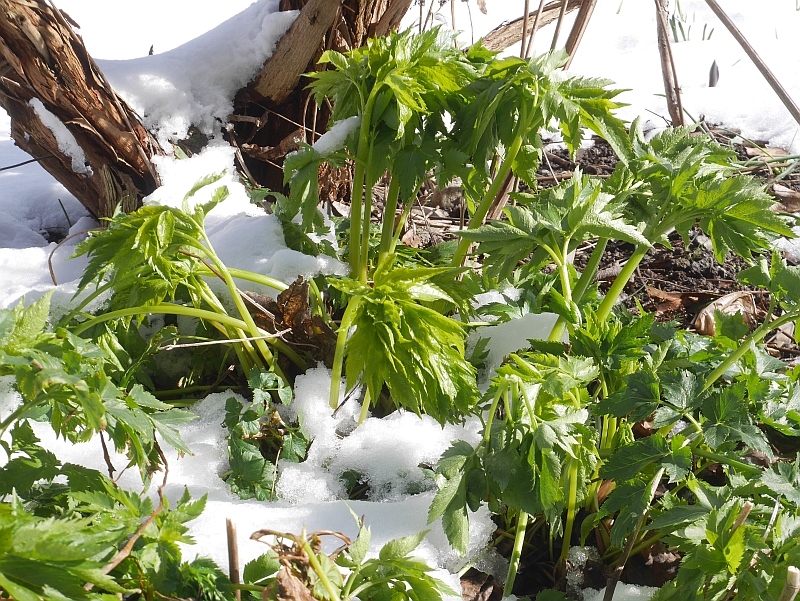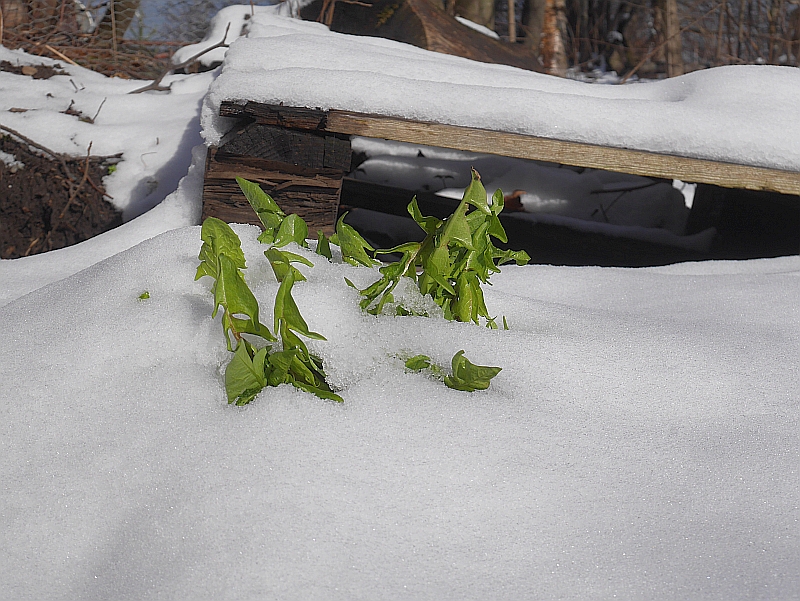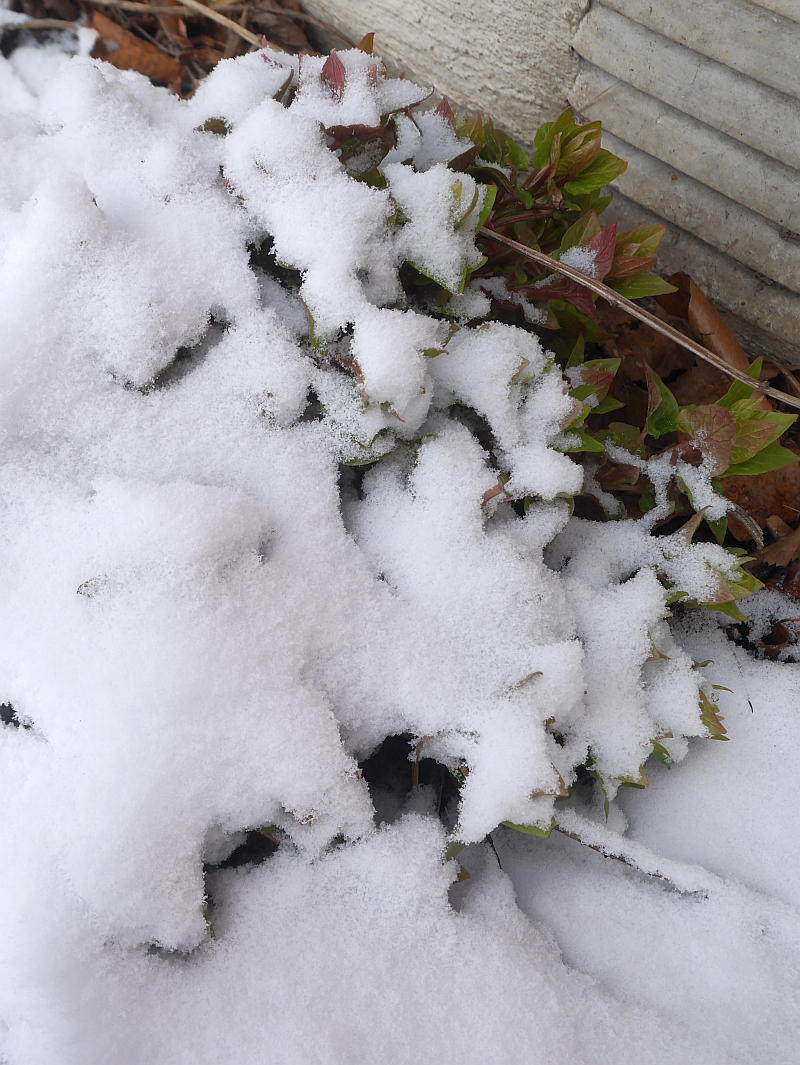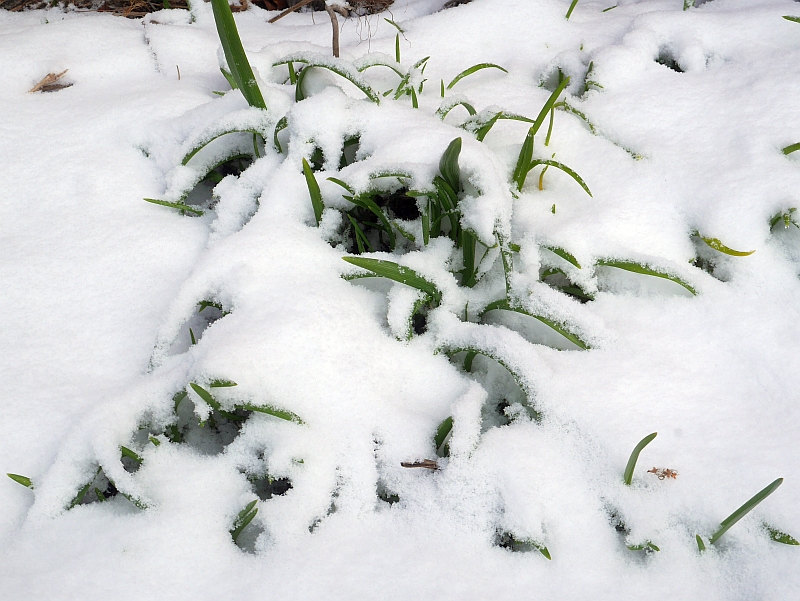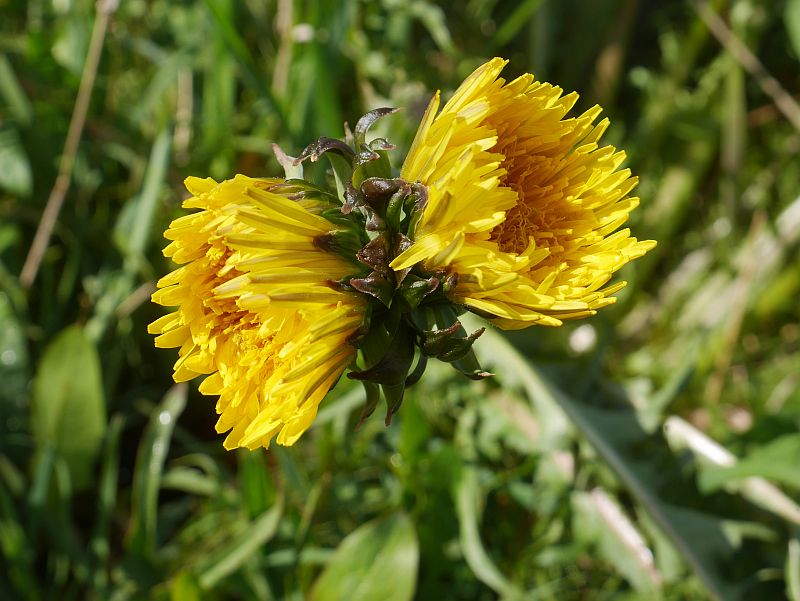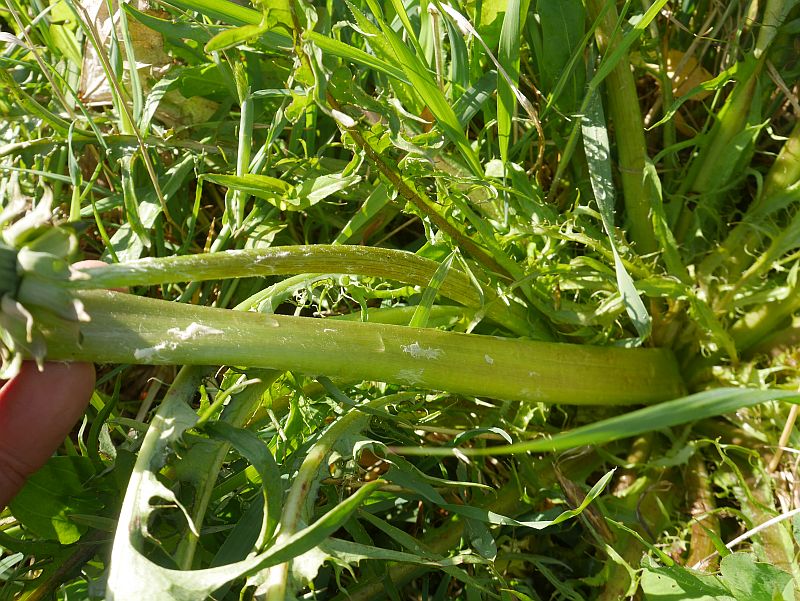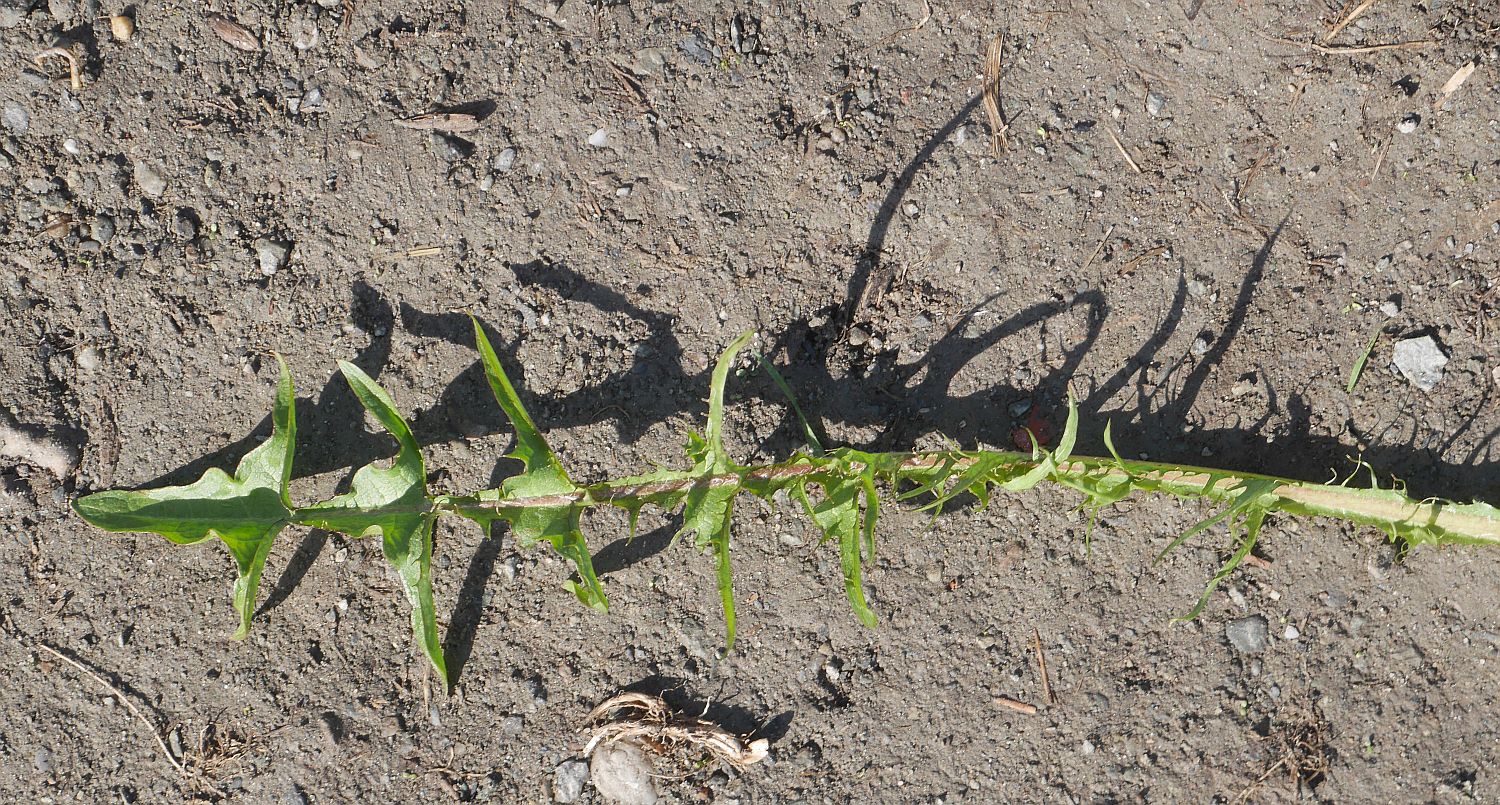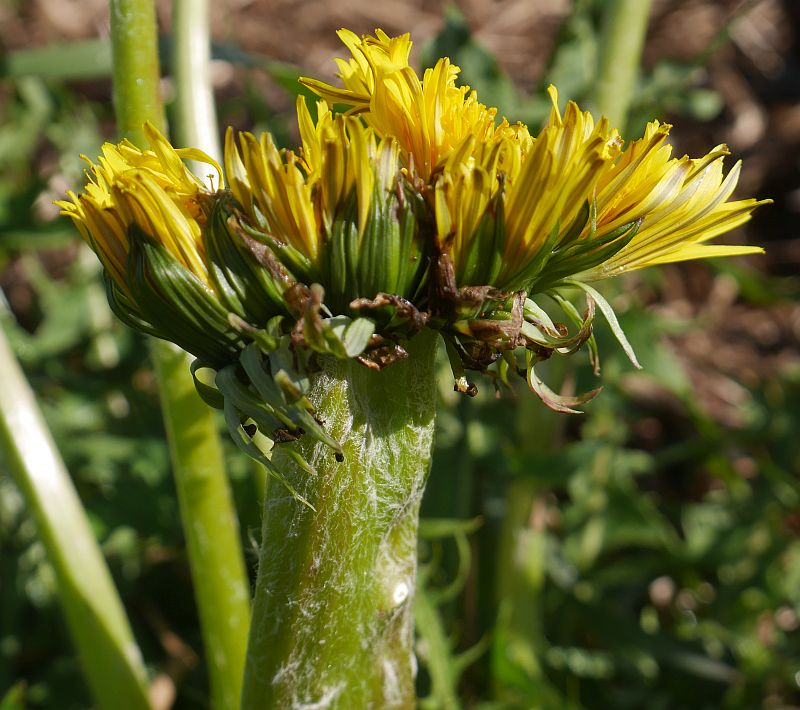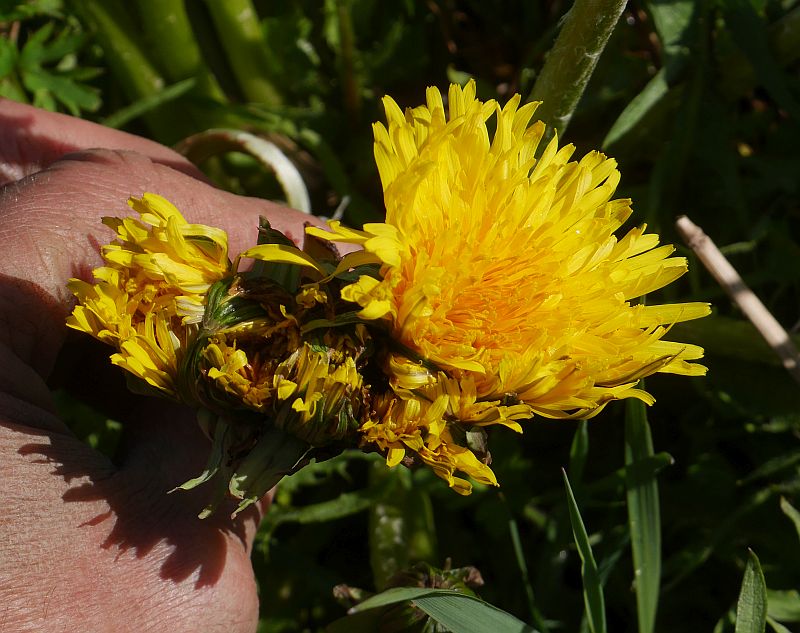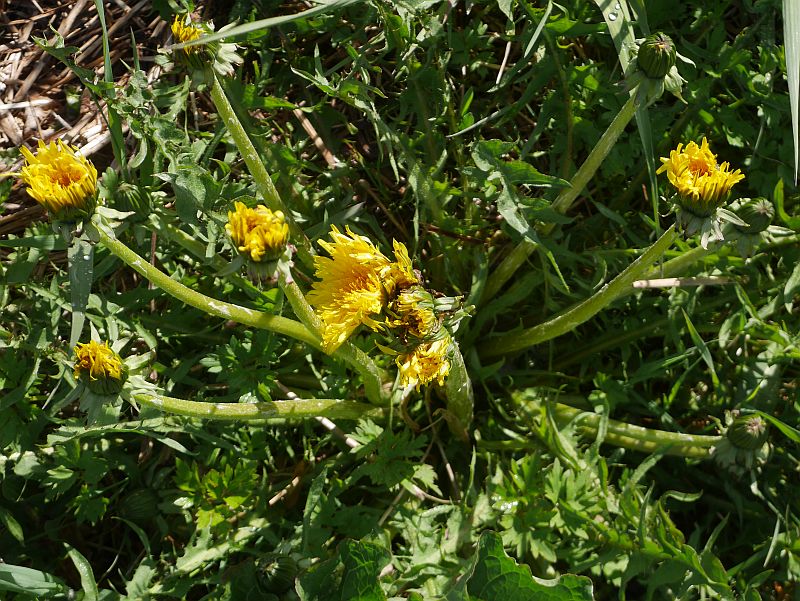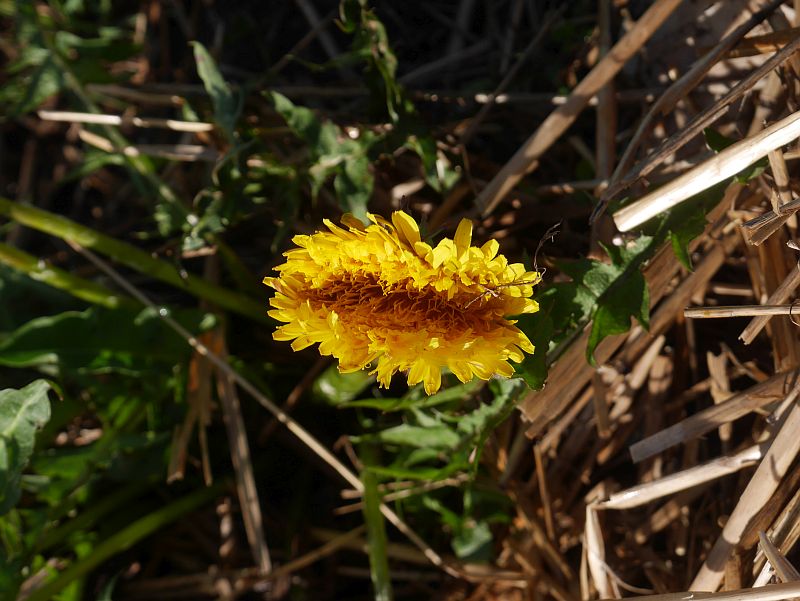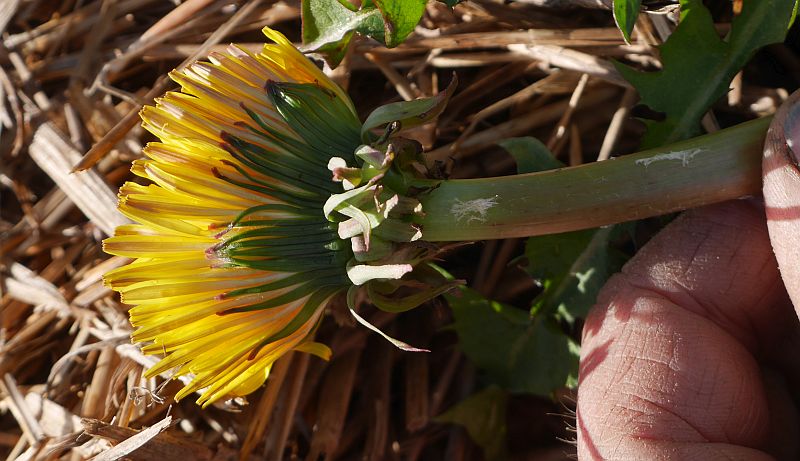I’ve changed full circle from the days when I fought against the dandelions to nowadays actively encouraging them in my perennial beds as they will be my most important veg all winter when we eat them every day (digging the roots for forcing like chicory before the first hard frosts). They fill all the gaps between my perennial edibles on the beds in the video and provide food for a range of insects and birds (directly feeding on the seeds and indirectly picking off the insects). At the same time I’ve become a much happier person looking at the seed heads, representing hope rather than disASTER (get it? Dandelions are in the Asteraceae)!
Tag Archives: Taraxacum
Indoor harvest
We’ve been eating dandelions every day this year and now the first batch that I brought up from the cellar is flowering: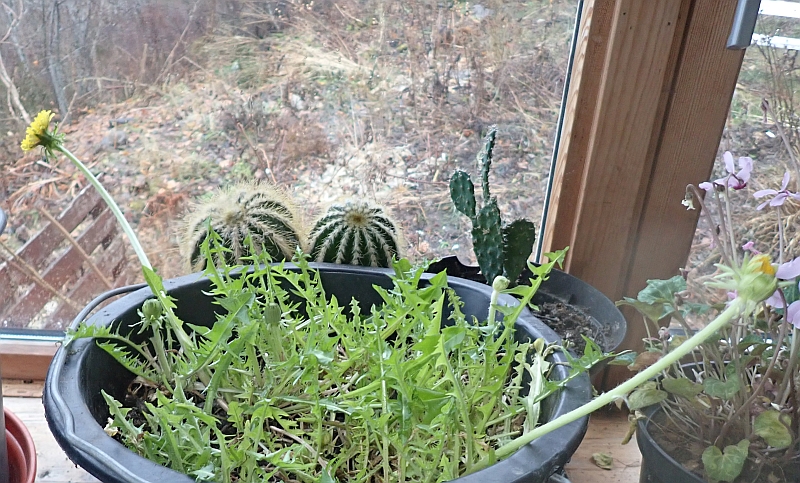
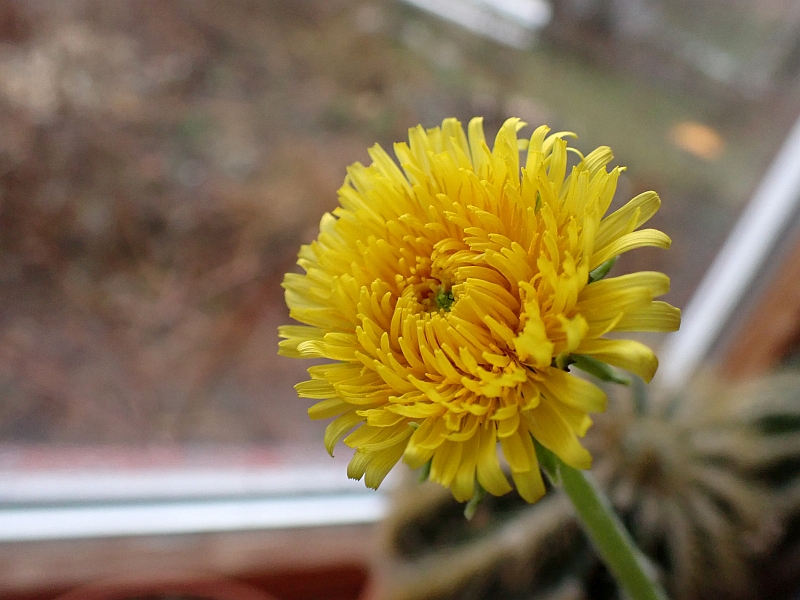
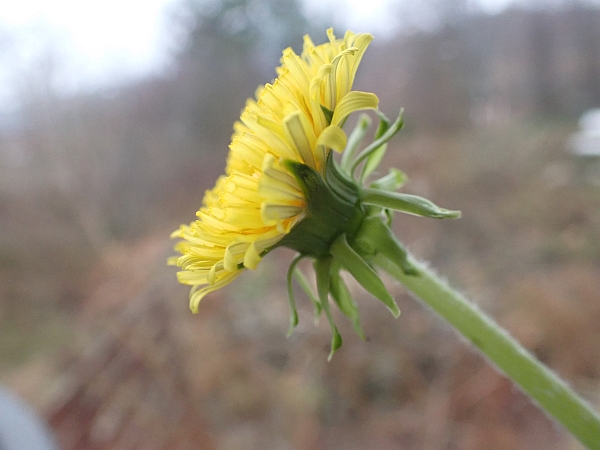 We ate that one yesterday, but there are several more stretching upwards, and the background today is much brighter after a heavy snow fall:
We ate that one yesterday, but there are several more stretching upwards, and the background today is much brighter after a heavy snow fall: …and a bucket of chives can also now be harvested from:
…and a bucket of chives can also now be harvested from:
Start of the 2023 Dandelion season
The first wave of dandelions ready for 2023! We will use them with lunch every day for the rest of the winter!


Geeking out with Dandelions
Earlier this year I bought the Field Handbook to British and Irish Dandelions by A.J. Richard which contains descriptions, photos and keys for all 239 known UK and Irish species, a book written during Covid lockdown! I was curious to go deeper into the world of dandelions and to hopefully identify the various species I have in my garden and area around apart from the obvious moss-leaved dandelion (is this really Taraxacum sublaciniosum?), the pink flowered dandelion (Taraxacum pseudoroseum) and white-flowered species like Taraxacum albidum. And what about some of the historical cultivars such as the French cultivar “Pissenlit Coeur Plein Ameliore”. What species is this?
Inspired by the book, I set about taking detailed photographs of about 40 different dandelions at home and at the Væres Venner community garden with the thought to have a proper look and try to key them out during the winter months. I did try one species but it was daunting and they may not be species found in the UK. I have introduced quite a few cultivated and wild Taraxacum species in the garden over the years. I also joined a couple of specialist Taraxacum groups on FB. There I met Alex Prendergast in Norwich who kindly sent me seed of 25 mostly identified species! Having the answer for species that I could grow and have before me should hopefully help me keying out some of my species! I finally got round to sowing these dandelions today; see the album below. At the very bottom are detailed pictures for one species, the moss-leaved dandelion, which I’ve learned are necessary for dandelion identification.

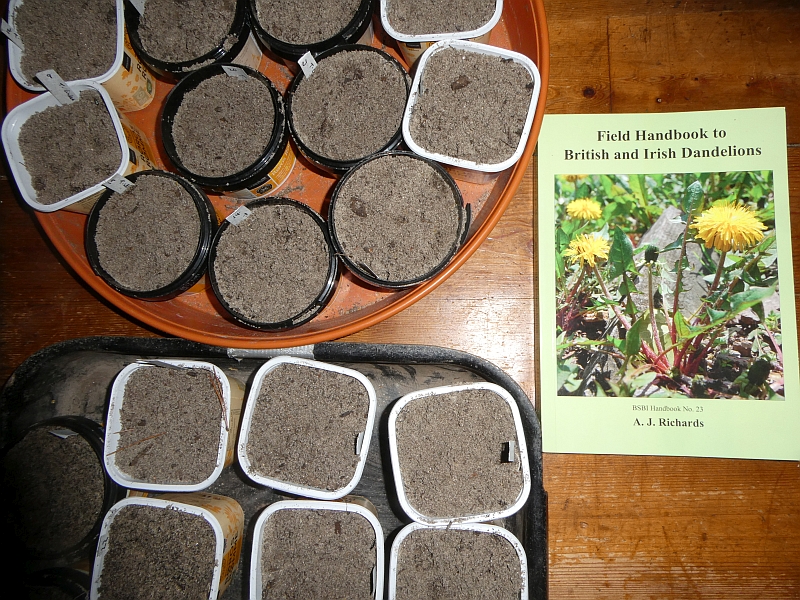 Detailed photos of the moss-leaved dandelion, so far known as Taraxacum sublaciniosum
Detailed photos of the moss-leaved dandelion, so far known as Taraxacum sublaciniosum
“Delikatess”:
Some odds and ends this week in Malvik
- The best of vegetables ready to harvest this week: blanched sea kale (Crambe maritima), blanched lovage (Levisticum officinale) and nettles (Urtica dioica)! Delicious.
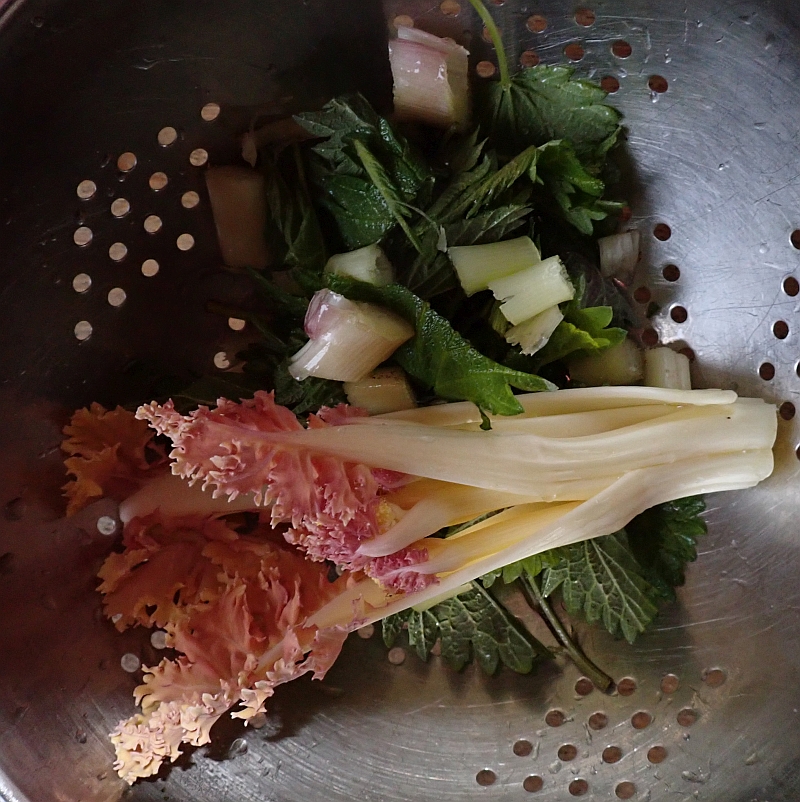
-
IT’S DANDINOODLE TIME HERE IN MALVIK: one of the year’s many highlights!This is by far my earliest dandelion to come into growth in March. It was sent to me as seed from the Alps in Switzerland, following a talk I gave there and was supposed to be similar to the moss-leaved dandelion but the leaves weren’t similar at all. These are from one plant! I’m trying to fine out which species it is…

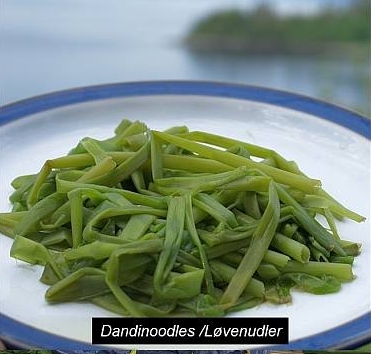 3. Allium paradoxum var paradoxum isn’t a plant you’ll want in your garden as this form has bulbils which can spread invasively. I was sent this 20 years ago from a garden in Sweden as Allium triquetrum but it wasn’t that one. I never considered either of these invasive Alliums as hardy enough to be a problem here and this one has slowly colonised the space around my oldest Hablitzia tamnoides. With warmer winters I have started more aggressive harvesting of this one.
3. Allium paradoxum var paradoxum isn’t a plant you’ll want in your garden as this form has bulbils which can spread invasively. I was sent this 20 years ago from a garden in Sweden as Allium triquetrum but it wasn’t that one. I never considered either of these invasive Alliums as hardy enough to be a problem here and this one has slowly colonised the space around my oldest Hablitzia tamnoides. With warmer winters I have started more aggressive harvesting of this one. I now harvest both the young leaves, the tops, in particular the bulbils to keep it under control. They are delicious both raw in mixed salads and cooked.
I now harvest both the young leaves, the tops, in particular the bulbils to keep it under control. They are delicious both raw in mixed salads and cooked.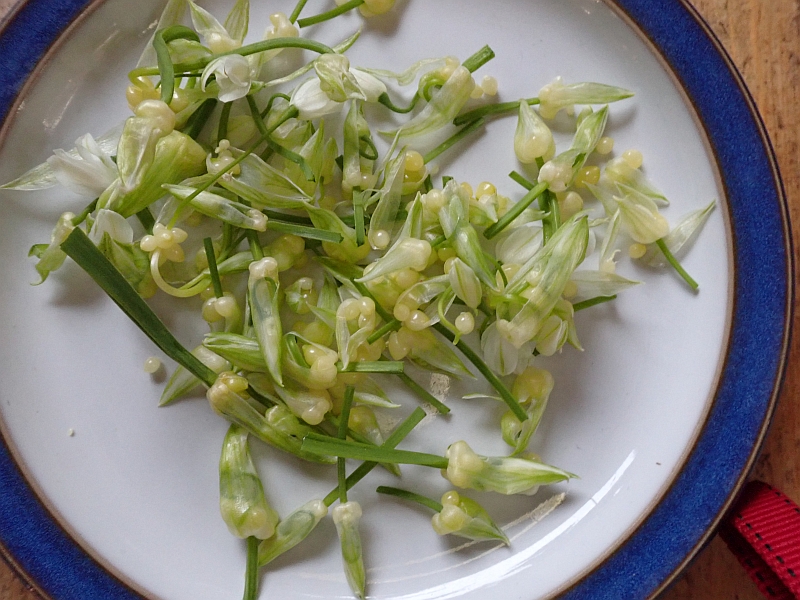
Cellar and Garden Greens: 6th April 2022
The greens that went into last night’s wholegrain spelt quiche are listed below the picture!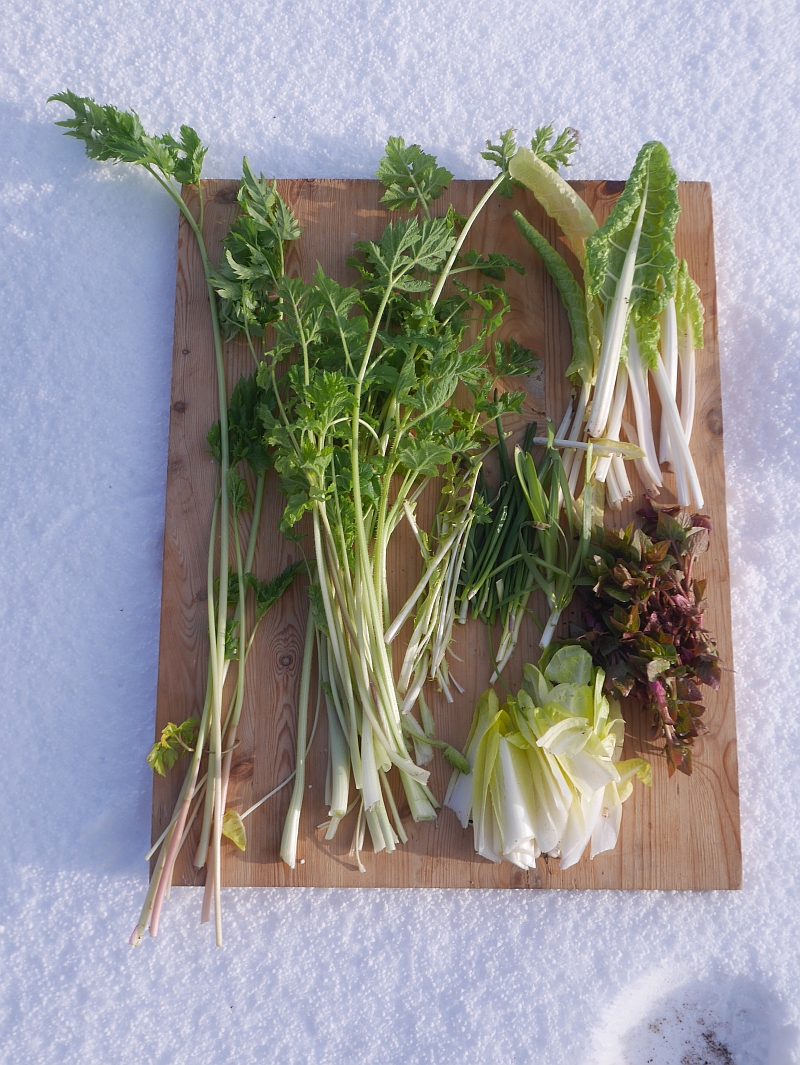 CELLAR: Dystaenia takesimana shoots; Forced hogweed (bjørnekjeks) shoots (Heracleum spp.); Forced Taraxacum (dandelion / løvetann); nederst til høyre: Witloof chicory (sikkori); øverst til høyre: swiss chard (mangold)
CELLAR: Dystaenia takesimana shoots; Forced hogweed (bjørnekjeks) shoots (Heracleum spp.); Forced Taraxacum (dandelion / løvetann); nederst til høyre: Witloof chicory (sikkori); øverst til høyre: swiss chard (mangold)
GARDEN: Various hybrid onions (Allium senescens x nutans) and Hablitzia tamnoides (Caucasian spinach / stjernemelde)
Snow onions


Various Allium species are the hardiest of edible plants either staying green all winter (e.g., Allium cernuum and Allium carinatum) or sprouting very early and able to withstand some frost. With a minimum forecast of -6C tomorrow after a very mild March, it will be interesting to see whether any of these early shooters are damaged. Here are a selection of pictures of Alliums and other early spring shoots in this weeks snow.
March soba greens
Today it reached an unusually warm 16C here which encouraged the first bumble bees and honey bees out! The picture shows the greens (and whites) used in tonight’s soba (buckwheat noodle) stir-fry:
Hogweed (Heracleum spp.) shoots (far left, from the cellar); top row: Dystaenia takesimana (outside), chicons (chicory shoots; cellar), horseradish shoots (cellar), garlic and Allium scorodoprasum shoots (outside), Allium cernuum shoots (outside); Below from L to R: Dandelion (Taraxacum) shoots from the cellar, ground elder (Aegopodium podograria) shoots (outside), lesser celandine (Ficaria verna), wild buckwheat (Fagopyrum tataricum) seed sprouts (living room), nettle shoots (Urtica dioica), hedge mustard (Alliaria petiolata) and (bottom right) Hablitzia tamnoides shoots.
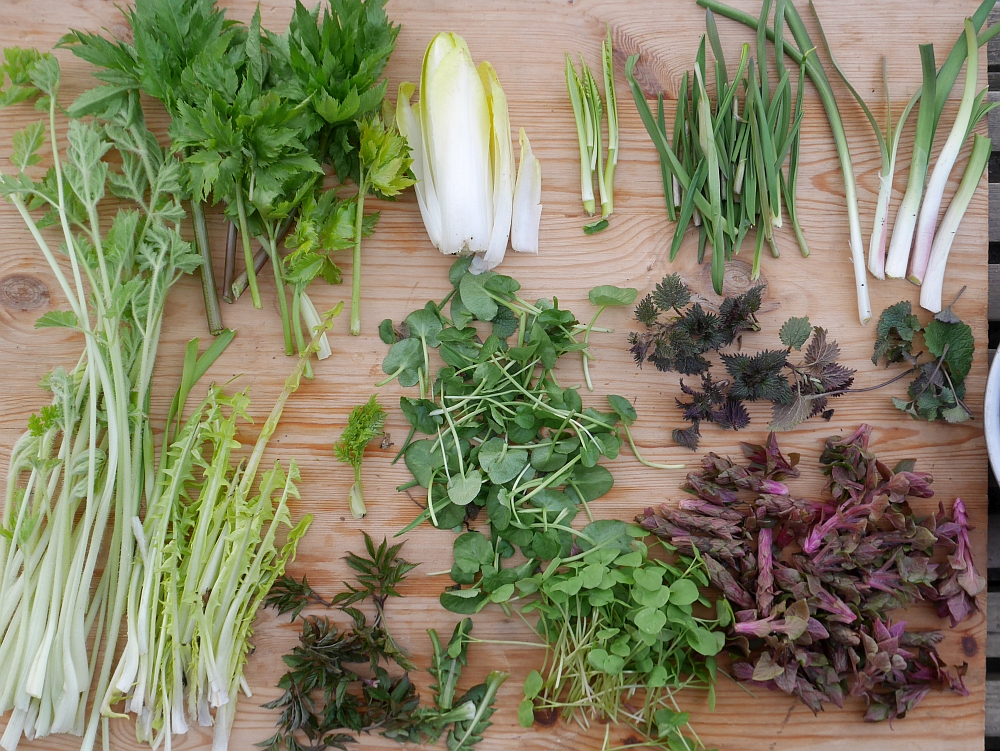
The first 2022 outside salad
Sorry for the silence here on the Edimentals blog. I’ve been busy preparing to produce signs and plant labels for the Allium garden and the World Garden as well as working on various KVANN (Norwegian Seed Savers) projects. However, I had to share the joy of making the first salad where all (25) plants were collected outside in the garden (we’ve been making salads from cellar ingredients all winter). The snow is now gone from most of the garden and the temperature rose to above 5C today which has stimulated a lot of early shooting edibles. No complete plant list, but the salad included various Alliums, Rumex, Dystaenia, Taraxacum, Arabis, Hablitzia etc.
The first outside edible flower of 2022 was a Primula veris subsp. macrocalyx.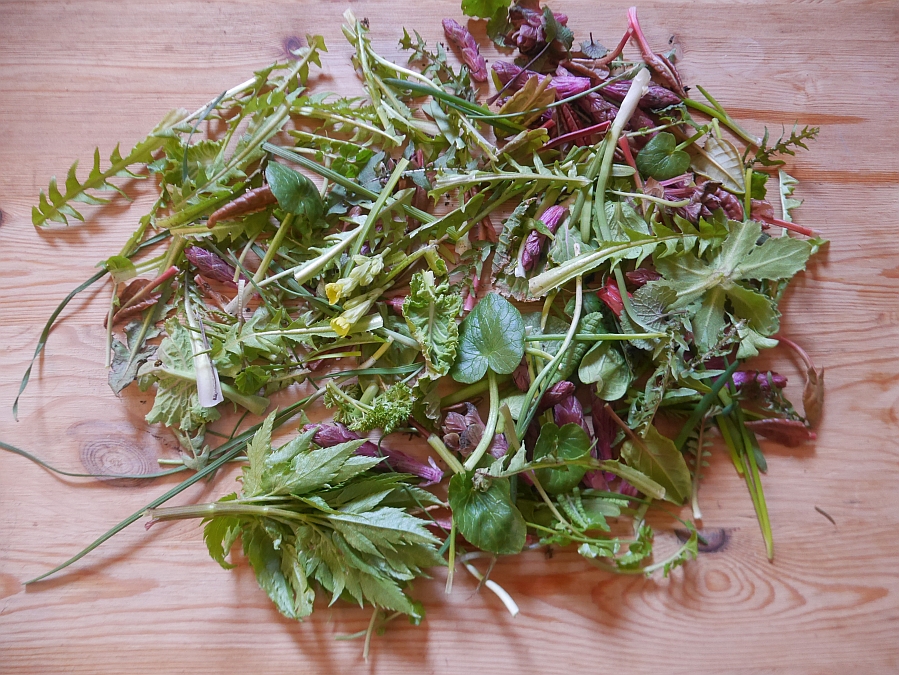
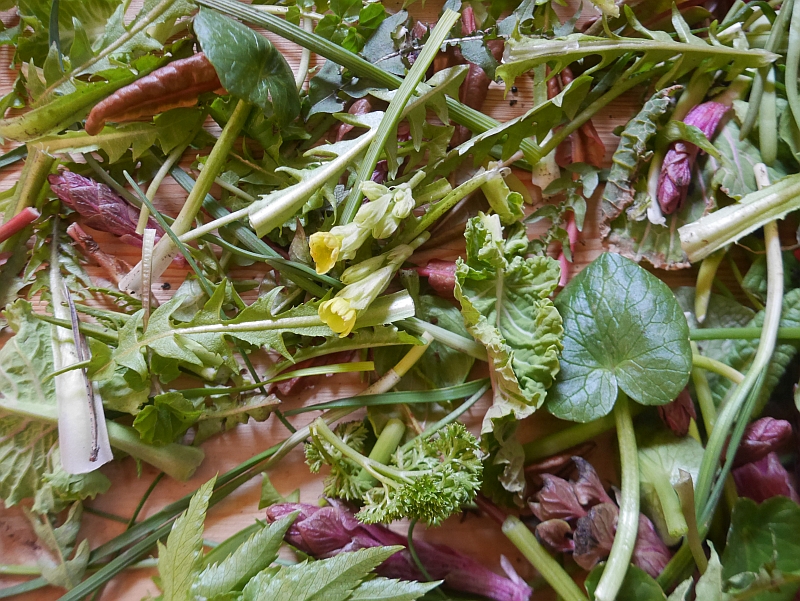
Fascinating fasciated dandelions
I was working at Væres Venner Community Garden yesterday and noticed a deformed (fasciated) dandelion flower. This can be caused by a range of factors including random genetic mutation, virus and bacterial infections. Damage to the plant’s growing tip and exposure to cold and frost can also cause fasciation and with the very cold weather after a mild start to spring is probably the cause in this case (see https://en.wikipedia.org/wiki/Fasciation).
Searching around I discovered two other fasciated dandelions! This phenomenon is rare, but I have seen it before a few times. However, I’ve never seen more than one plant affected within a small area before! I photographed each of the plants below and fantasising about making fascinating fasciated dandinoodles* or rather dandi-lasagne as the flower stems are flattened :)
Unfortunately, this mutation doesn’t seem to return in the following year in dandelions..
*Dandinoodles (løvenudler) are made from quickly boiling the flower stems perferably before the flowers open and just mixing with butter or olive oil:
Fasciated Plant #1 had twin or siamese flowers:
Fasciated Plant #2 had 6 flowers on the one stem and a twisted flower stem! Note that the fasciated stem is shorter than the normal flower stems:
Fasciated Plant #3 was different again, this time a single distorted flower (cresting):

